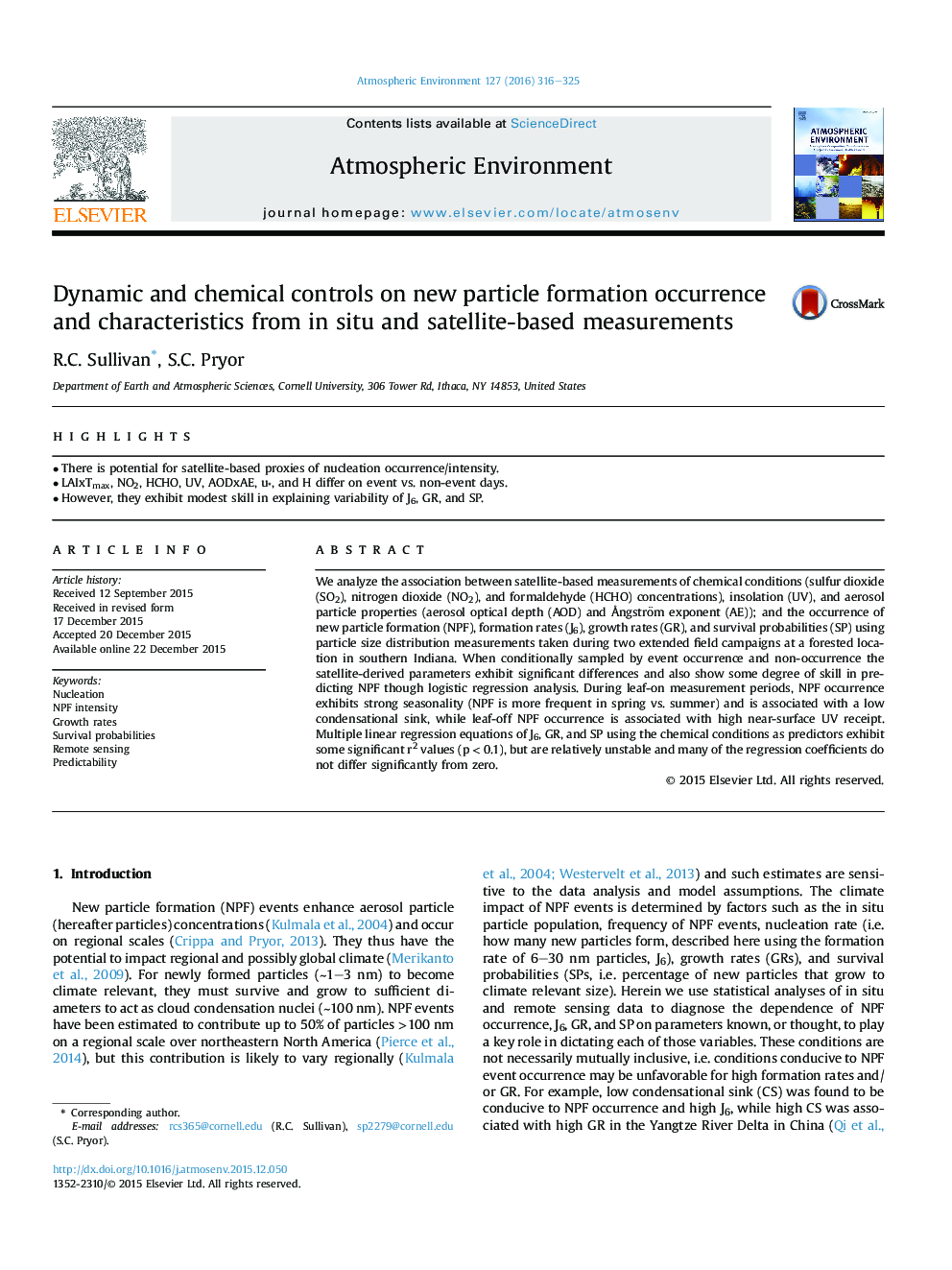| Article ID | Journal | Published Year | Pages | File Type |
|---|---|---|---|---|
| 6336901 | Atmospheric Environment | 2016 | 10 Pages |
Abstract
We analyze the association between satellite-based measurements of chemical conditions (sulfur dioxide (SO2), nitrogen dioxide (NO2), and formaldehyde (HCHO) concentrations), insolation (UV), and aerosol particle properties (aerosol optical depth (AOD) and Ã
ngström exponent (AE)); and the occurrence of new particle formation (NPF), formation rates (J6), growth rates (GR), and survival probabilities (SP) using particle size distribution measurements taken during two extended field campaigns at a forested location in southern Indiana. When conditionally sampled by event occurrence and non-occurrence the satellite-derived parameters exhibit significant differences and also show some degree of skill in predicting NPF though logistic regression analysis. During leaf-on measurement periods, NPF occurrence exhibits strong seasonality (NPF is more frequent in spring vs. summer) and is associated with a low condensational sink, while leaf-off NPF occurrence is associated with high near-surface UV receipt. Multiple linear regression equations of J6, GR, and SP using the chemical conditions as predictors exhibit some significant r2 values (p < 0.1), but are relatively unstable and many of the regression coefficients do not differ significantly from zero.
Related Topics
Physical Sciences and Engineering
Earth and Planetary Sciences
Atmospheric Science
Authors
R.C. Sullivan, S.C. Pryor,
